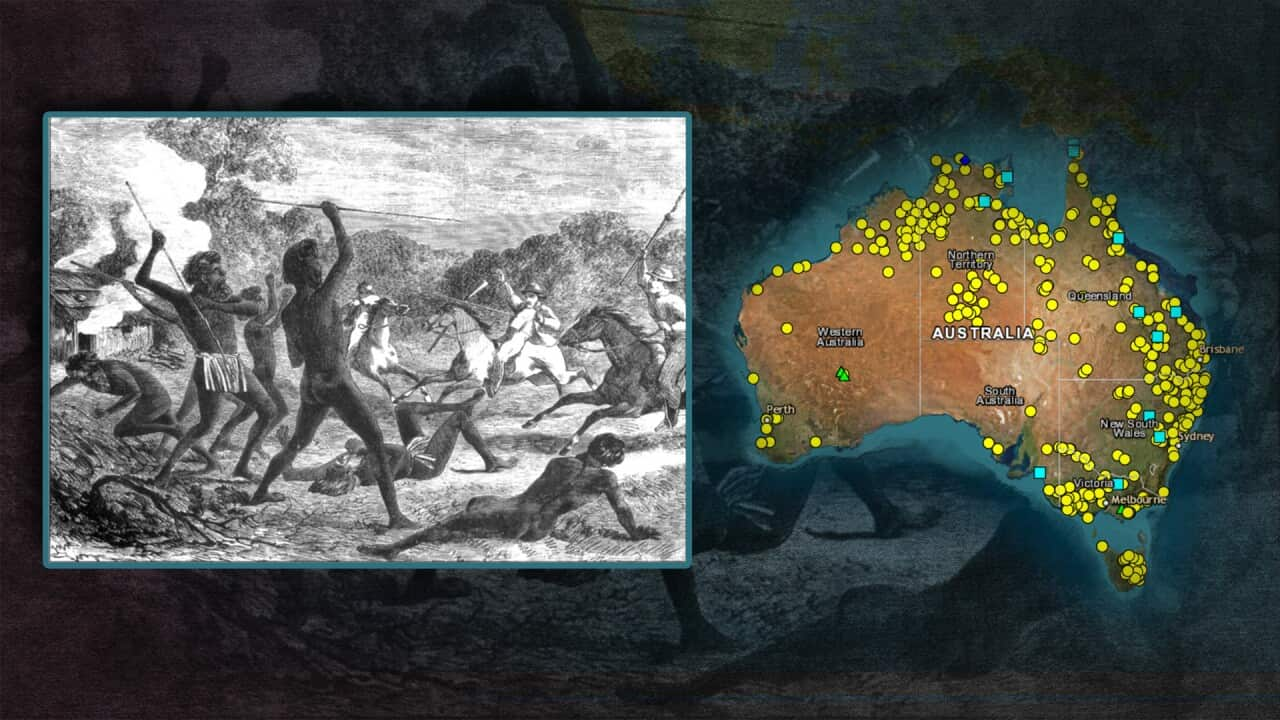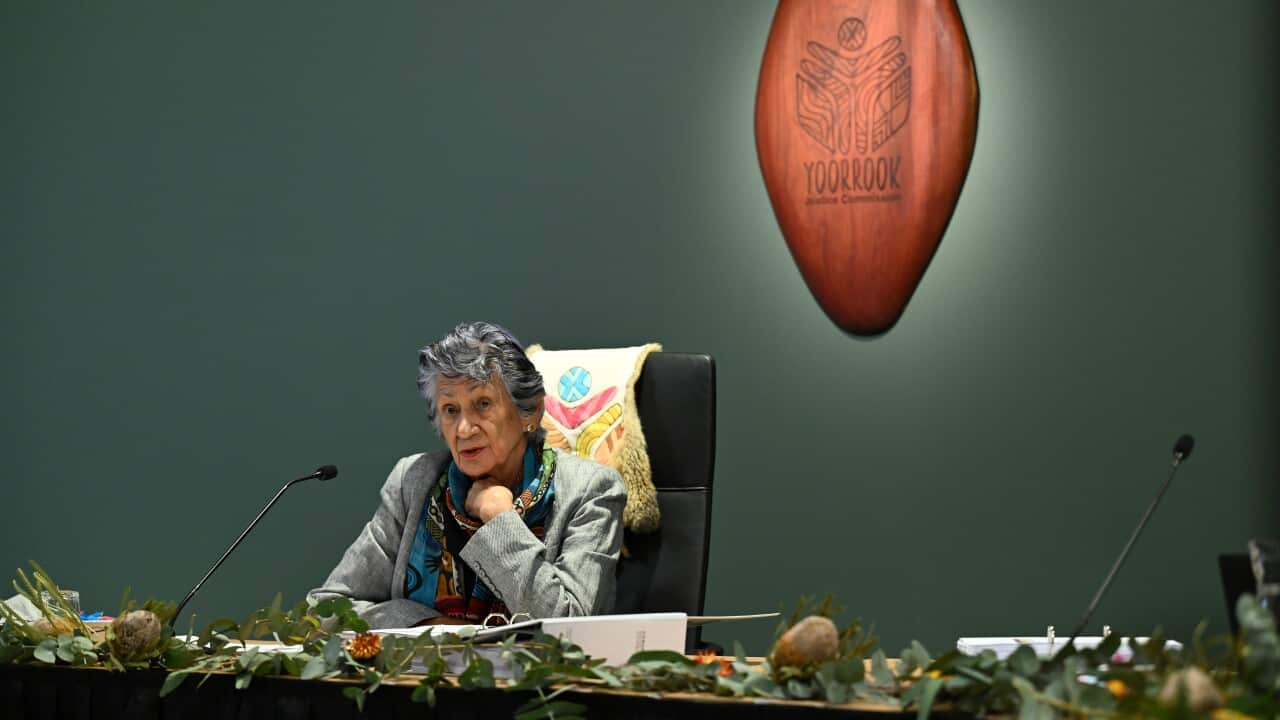Key Points
- Project tracked colonial-era massacres across the continent
- More than 400 massacre sites were identified
- Over 10,000 Indigenous people were killed in such massacres
Warning: this article discusses themes of violence and genocide that may be distressing to readers.
The long-running project to document the extent of colonial-era violence visited upon First Nations people has released its final results.
Known as the 'massacre map', the Colonial Frontier Massacres digital map project painstakingly investigated clashes between invading colonists and First Nations people across the continent between 1788 and 1930.
Its results paint a macabre picture of the founding of the modern nation: 438 massacres were recorded, resulting in the murders of 10,374 Aboriginal and Torres Strait Islander peoples.
The grim figures are considered "conservative", with the true numbers possibly higher.
Having officially concluded in 2022, the project's final research efforts, in which every site on the map was reviewed using archive material and contributions from the general public, have now wrapped up, leading to the release of the information.
The map, painstakingly researched over eight years, represents a significant milestone in the breaking of 'the great Australian silence', the inability or unwillingness of the broader Australian society to acknowledge the genocidal reality of the country's founding.
That whitewashing began with the massacres themselves, with perpetrators often maintaining a code of silence amongst themselves so as to avoid repercussions.
Stream free On Demand

Episode 1
episode • The Australian Wars • documentary • 57m
M
episode • The Australian Wars • documentary • 57m
M
"From the moment the British invaded Australia in 1788, they encountered active resistance from the Aboriginal and Torres Strait Islander owners and custodians ..." .
"Frontier massacres were a defining strategy to contain and eradicate that resistance. As a result thousands of Aboriginal and Torres Strait Islander men, women and children were killed."
While no legal definition of the word exists, the project defines 'massacre' as the deliberate killing of six or more "relatively undefended people" in one operation.
That number was selected for its "devastating" impact on tight-knit Indigenous communities.
In recognising the resistance of First Nations peoples, which was fierce and sustained, the project records 13 massacres of non-Indigenous colonists, resulting in the deaths of 160 people.
Retaliation against these massacres almost always resulted in reprisals of "extraordinary scale".
Speaking to the Guardian, researcher Dr Bill Pascoe said the map provided irrefutable evidence of the horrors of colonisation faced by Aboriginal and Torres Strait Islanders.
“Back in the 80s and 90s it was possible for people to argue that the frontier wasn’t so violent, and for them to be believed," he said.
"Nobody can argue that point any more. Anybody can go and read the evidence for themselves. It’s time to move on to the next step – now that we know that these events happened, we need to understand more about them."




